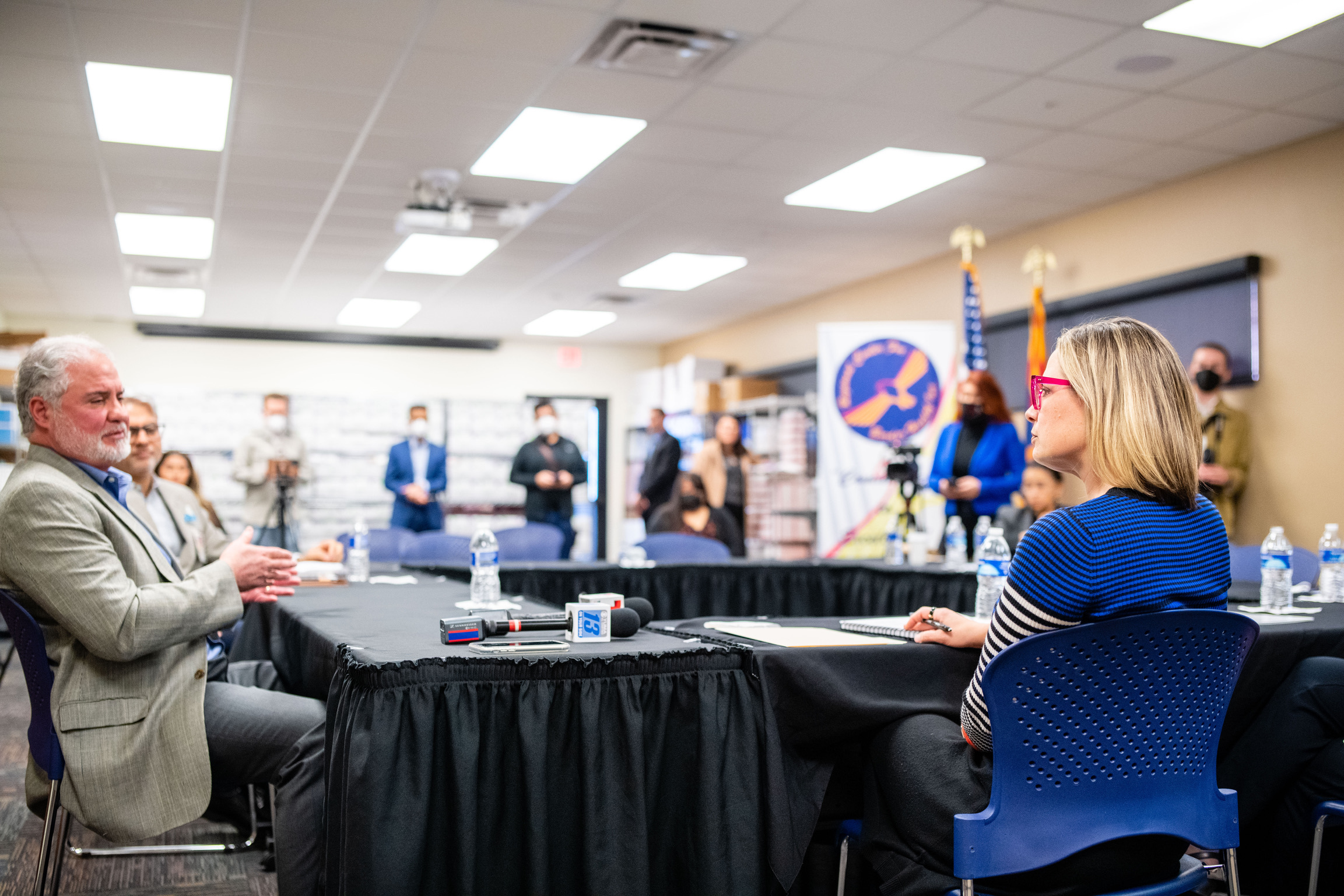Sinema highlighted work ensuring health care providers have adequate staffing resources, coordination with federal agencies
YUMA – Arizona senior Senator Kyrsten Sinema sat down with health care leaders and providers in Yuma County to hear firsthand how the crisis at the Southern border has placed an additional burden on the County’s health care system, which was already strained by the ongoing pandemic.
“The ongoing coronavirus pandemic and migrant crisis continue to cause difficulties for providers, doctors and nurses throughout Yuma County. We’re working to ensure health care workers and community partners in Yuma and across Arizona have the support and resources needed to care for Arizonans and keep Arizona families safe and healthy,” said Sinema, Chair of the Border Management Subcommittee.
During the discussion, Regional Center for Border Health, Yuma Regional Medical Center, and Yuma County health care leaders underscored the challenges they’re facing due to the crisis at the border during the ongoing pandemic, including a strain on quarantine facilities when migrants test positive for COVID-19. Such strain leads to further staffing and resource shortages.
Sinema recently cosponsored the Healthcare Workforce Resilience Act—bipartisan legislation introduced by Democratic Senator Dick Durbin (Ill.) and Republican Senator John Cornyn (Texas) that allows unused visas from prior years to be used by doctors and nurses who can help combat the COVID-19 pandemic and meet the ongoing health care staffing challenges in Arizona and across the country.
Earlier this month, Sinema and Senator Mark Kelly called on Arizona Governor Doug Ducey to authorize the Arizona National Guard to provide wraparound assistance to Arizona hospitals and health care providers facing staffing shortages during the Omicron variant surge.
In December 2021, Sinema and her office also helped secure Federal relief for the health care system in Yuma, working with the Department of Health and Human Services, Federal Emergency Management Agency, Customs and Border Protection, and the Department of Defense to send additional medical personnel to assist with medical triage and other emergency services.
For more photos of the event, click HERE.

